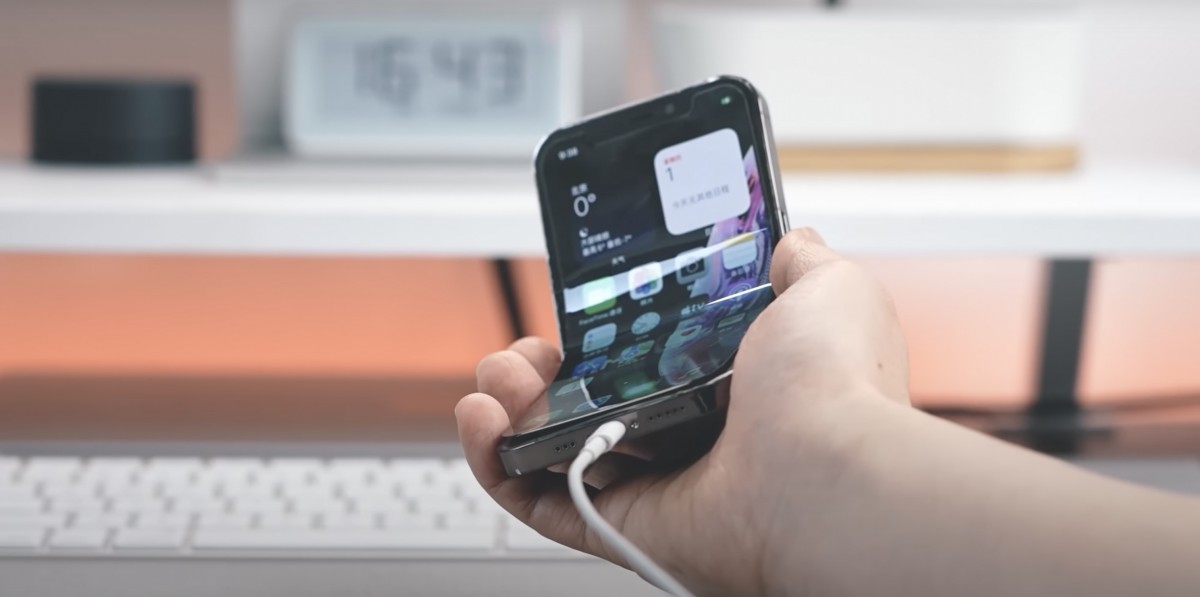An Apple iPhone foldable could be here by 2026, and it’s about time
New rumors suggest an iPhone foldable could be close to production

Apple could be closer than expected to launching a foldable iPhone, according to The Information, citing a person with direct knowledge. The company is believed to be closer to launching a foldable iPad mini, but an iPhone foldable could be ready for stores as early as 2026 if it meets Apple’s strict standards.
The company’s first foldable is expected to be in proportion with the Galaxy Z Flip 5 or Motorola Razr Plus, with a clamshell shape that makes it pocketable when folded. The company is said to be looking into a design that folds the screen outwards so the display is on the outside, but that concept has obvious durability drawbacks that Apple reportedly hasn’t been able to get around.

There are apparently two different foldable iPhone designs that are in the prototype stage. Of course, companies often produce working prototypes of products and concepts that will never be sold to the public. It is likely that Apple has created working iPhones that fold in the past. This time, the source seems confident that Apple is looking towards production, though the phone would not be on the calendar for this year or 2025.
Apple may have shuffled the order, moving a folding iPad mini device ahead of work on a folding iPhone. With an eight-inch flexible display, the folding iPad would be similar to the current screen size for foldable tablet phones like the Honor Magic V2 or the OnePlus Open.
There's no indication Apple will use an external display on this device. It may just be a tablet that folds shut, not a phone with two display options.
Analysis: too soon to tell, but it's gonna be expensive
The most important questions about an Apple iPhone fold have not been answered, as The Information rightly points out. Why does this phone need to exist? What features would a foldable design bring to the iPhone that would make people need to upgrade?
Based on the foldable design ideas that have trickled out of Apple HQ, Apple’s device will need to use very expensive, high-end, durable parts to be a viable product. In other words, it’s going to be very expensive. The current clamshell foldable market has plateaued and is starting to fall, as interest hasn’t seemed to catch on.
Sign up for breaking news, reviews, opinion, top tech deals, and more.
While these phones used to list for more than $1,000 in the US, the Motorola Razr Plus, my current pick for the best foldable clamshell phone, now costs $699.99 with a limited-time ‘discount’ that Motorola has offered for about four months. Samsung’s Galaxy Z Flip 5 is more pricey, and it uses higher-end internal components, like a faster processor and more powerful cameras.

Apple’s most expensive iPhone 15 Pro Max starts at $1,199 / £1,199 / AU$2,199, and if that seems expensive, remember that Samsung has two phones, the Galaxy S24 Ultra and the Galaxy Z Fold 5, that start at a higher price. Even if Apple decides to sell its iPhone at a 50% premium over the current iPhone 15 Pro, it would still be cheaper than Samsung’s most expensive foldable phone.
According to the report, Apple’s phone could launch in 2026, at the earliest, with an entirely new design concept that will push the price even higher than current clamshell phones. If two years seems like a long time, enough time for the price to potentially drop, I’ve got bad news. In terms of smartphone development, two years is actually not much time at all.
A standard upgrade to an existing smartphone, ie. the iPhone 15 following the iPhone 14, usually encompasses 18 months of development. If Apple plans on launching this phone within two years, this phone is closer to complete than a first-run prototype. It is six months from being on a standard launch timeline.
Apple won’t have time to wait for prices to drop. It’s going to launch another super-expensive new product, yanked from the future, and our wallets be damned.
You might also like

Starting more than 20 years ago at eTown.com. Philip Berne has written for Engadget, The Verge, PC Mag, Digital Trends, Slashgear, TechRadar, AndroidCentral, and was Editor-in-Chief of the sadly-defunct infoSync. Phil holds an entirely useful M.A. in Cultural Theory from Carnegie Mellon University. He sang in numerous college a cappella groups.
Phil did a stint at Samsung Mobile, leading reviews for the PR team and writing crisis communications until he left in 2017. He worked at an Apple Store near Boston, MA, at the height of iPod popularity. Phil is certified in Google AI Essentials. His passion is the democratizing power of mobile technology. Before AI came along he was totally sure the next big thing would be something we wear on our faces.